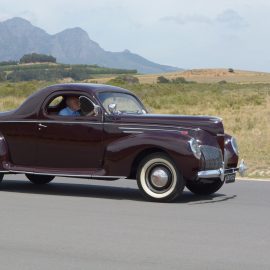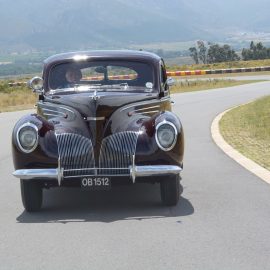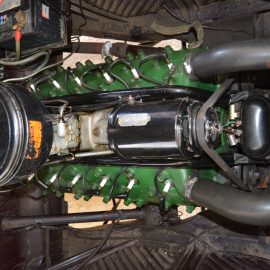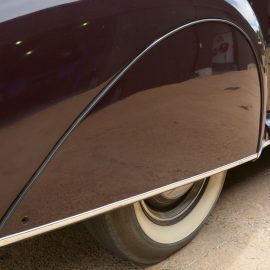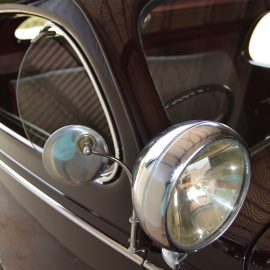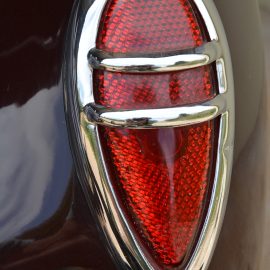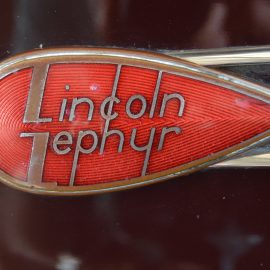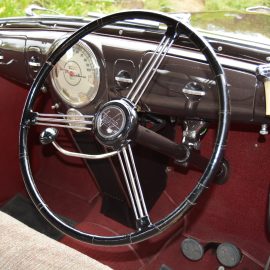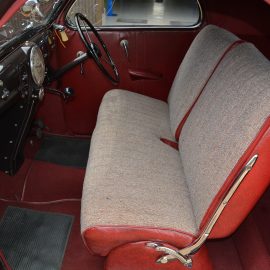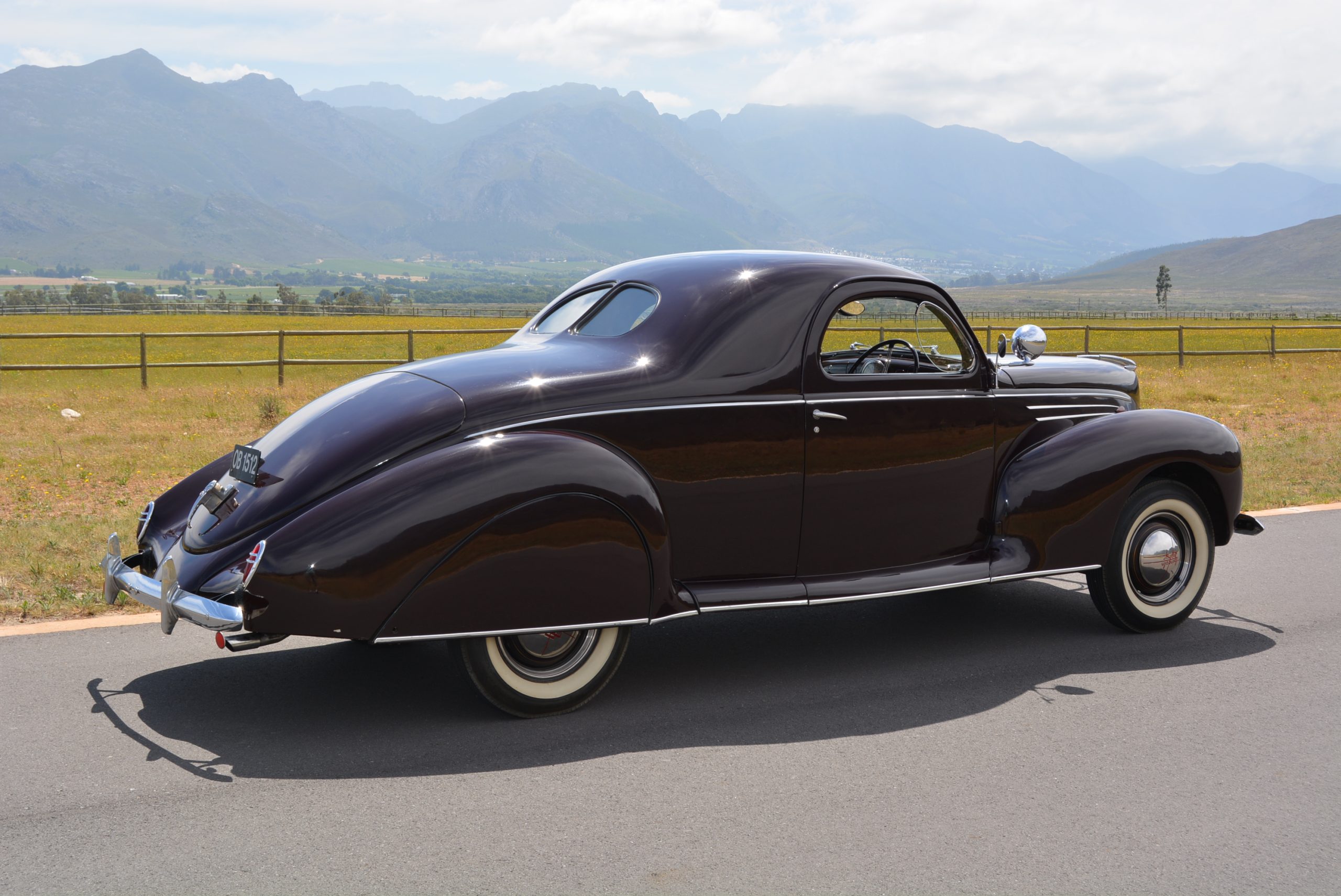
26 May Collection In Action: Lincoln Zephyr
Today, 12-cylinder cars are something of a technology and performance overload, but back in the 1930s such engines had more down-to-earth applications. Mike Monk drives an art deco example that ‘goes like the wind’…
In these days of ever-increasing demands on automobile efficiency, economy and emissions reduction, a 12-cylinder engine is looked upon with some circumspection, and only the elite and exotic manufacturers boast range-topping machines powered by a ‘demon dozen’. But back in the mid-1930s when America was in the throes of recovering from the Great Depression, Ford was looking to attract buyers to a lower-priced, mid-size luxury car to bridge a gap in its corporate model line-up, and the Lincoln Zephyr marque was the result. But far from being something cobbled together from the Ford stable parts bin, the stylish Zephyr was something of a trend-setter powered by a relatively unstressed V12 engine.
Introduced in November 1935 as a 1936 model, the Lincoln Zephyr boasted a number of modern features. It was designed by Ford’s styling chief Eugene Turenne ‘Bob’ Gregorie, who was a close friend of the then Lincoln company president Edsel Ford, and the concept is said to have been based on the Pioneer Zephyr Streamliner train, otherwise known as the Burlington Zephyr. (The name Zephyr is derived from the Greek word Zephyrus, meaning ‘The god of the west wind’.) The shape included a low-raked windscreen, integrated fenders and aerodynamic bodywork to create a low drag coefficient, which was better than the rivalling Chrysler Airflow, the model that had started an ill-fated period of streamlined designs. In fact, the Zephyr was called “the first successfully streamlined car in America” by the Museum of Modern Art in New York. With its monocoque construction – the Zephyr was the first corporate Ford passenger vehicle to have an all-steel roof – the body was also strong yet relatively light, tipping the scales at 1 596 kg.
Under the self-supporting bonnet was a compact, 75-degree V12 engine adapted from Ford’s Flathead 90-degree V8 with four cylinders tacked on. Cubic capacity was 4380cc and with a single down-draught carburettor, it delivered 82 kW at 3 900 r/min. Peak torque of 244 N.m was available on an amazingly flat plateau from 400 to 3 500 r/min. The engine used aluminium-alloy cylinder heads and cast-steel pistons, as well as two water pumps. It also had a unique distributor with a coil assembly that actually consisted of two coils, one for each cylinder bank. The Zephyr’s top speed was 90 mph (145 km/h).
However, the design was flawed: inadequate crankcase ventilation, poor oil flow and too-small water passages (that led to overheating, bore warpage and ring wear) resulted in early reliability problems. To a degree, some of these maladies were dealt with during the Zephyr’s first year, and Ford improved the engine by adopting hydraulic valve lifters for 1938 and cast-iron heads and oiling improvements for 1942. Yet this V12 never shed its reputation for service troubles, though the post-war versions were, in reality, quite reliable.
Suspension was by Henry Ford’s beloved transverse leaf springs front and rear, with a dead axle up front and torque tube at the rear that, contrary to the car’s styling, was seen as an outdated set-up when the car was introduced. Four-wheel drum brakes were cable-activated for 1936-38 models but from 1939 they were hydraulic.
Styling changes were made in 1938, most noticeably to the front end and rear fenders, and the wheelbase was lengthened by three inches to 125 inches (3 175 mm). An 18-inch (457 mm) steering wheel was introduced, and a convoluted floor-mounted gear lever also appeared.
FMM’s 1939 Lincoln Zephyr is a 1939 two-door Coupé, model code H-72, which is listed in journals as being a six-seater but the seating belies that capacity. The front seat is a bench with split backrests to allow access to the rear where, unusually, there are two sideways-facing stools, which, combined with the sloping roofline, is hardly a comfortable place to be, especially for adults. A 3+2 with a difference… It sold for $1 320 – the cheapest variant in the six-model line-up for 1939.
The Zephyr’s rakish styling has some Art Deco appeal to it and teardrop elements appear in the shapes of the front and rear lights, the rear wheel spats and some badging. Climbing aboard, the dashboard provides automotive symmetry: a centrally-placed, circular instrument dial housing the speedo along with fuel, coolant temperature, oil pressure and battery condition gauges. The all-encompassing dial had a smaller-faced clock beneath it and was flanked by matching ashtrays and glove boxes.
Flick a toggle switch to ‘on’, press the start button and the engine’s 12 pistons spin into life with unruffled ease. Engage first in the conventional three-speed gearbox via the contorted lever that emerges from behind the hang-down console, release the stout under-dash handbrake and the Zephyr pulls away with the kind of lazy aplomb you would expect from a big-capacity, multi-cylinder engine. Despite the basic steering and suspension set-up, once on the move the rigid body contributes to a comfortable ride and the steering only gets heavy at slow speeds. With a turning circle of 13,4 metres, the Zephyr is hardly wieldy but the big spring-spoked wheel is not too heavy to twirl. The tapered bonnet points the way ahead and typical of any big-capacity cars, there is a feeling of serenity while travelling along. In its day, I can imagine its presence adding some style to the lifting gloom of the period, and even today, with its striking good looks, the Zephyr comes across as a cool cruiser.
A total of 21 000 Zephyrs were sold in 1939, of which the H-72 Coupé accounted for 2 500, and the model range rejuvenated Lincoln’s status as a manufacturer. A redesigned body appeared in 1940, but production was halted in 1942 until the end of WWII, after which the car reappeared but badged simply as a Lincoln in the wake of Ford’s merging of Lincoln with its Mercury brand in 1945.
The Lincoln Zephyr V12 is currently on view in Hall A.




